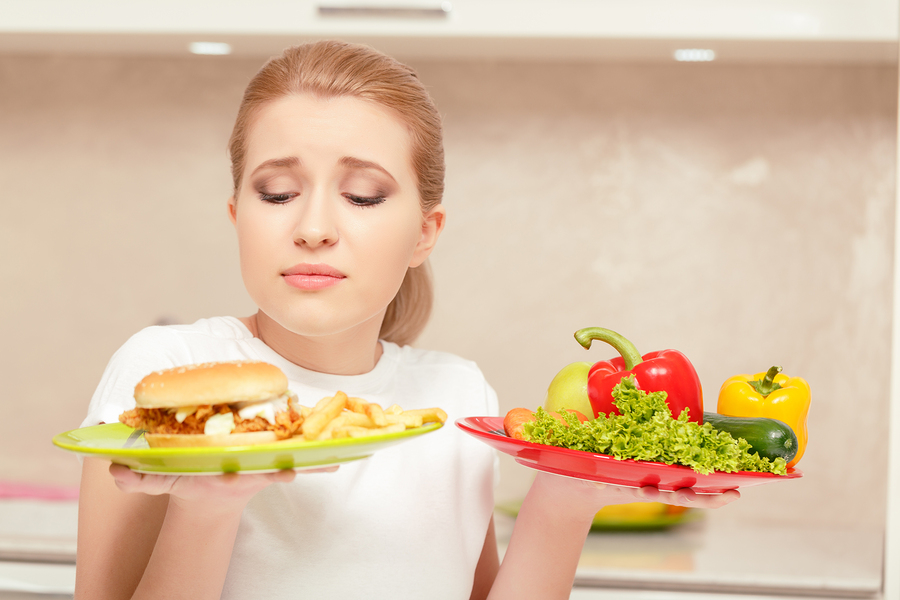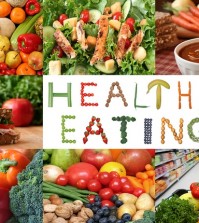- Make It Yourself Lavender Heart-Shaped Bath Bombs!
- 20 Things You Never Knew About “Down There”
- 12 Best Foods For Those Suffering From Arthritis Pain
- 12 Personal Hygiene Mistakes Almost Everyone Makes (Mom Never Told You About #4!)
- 15 Medicinal Plants And Herbs From The Cherokee People
- 12 Mind-Blowing Benefits Of Drinking Coconut Water During Pregnancy
- 12 Outstanding Winter Foods That Won’t Fatten You Up Like A Christmas Turkey
Eat Right, Stay Light: How To Pick Foods That Keep You Full

Photo credit: bigstock.com
Have you ever had what seemed like a big meal, only to feel hungry again an hour later? This all too common phenomenon can be both aggravating and inconvenient. You can feel like you just dropped a bunch of money on nothing, even if the meal was delicious.
The fact is, some foods merely fill us up, while others actually satisfy us. The key to avoiding that empty feeling after a meal is to pick the right foods. This article will explore why some foods fill you up, why others leaving you starving, and how to pick the right foods for when you want to feel fuller longer.
1. Fiber
It may seem like calories are the source of the problem, and we will get to that, but first, let’s talk about fiber. This is a huge part of this dilemma that is often overlooked. The amount of fiber a food contains will determine how quickly it digests and affects how long the feeling of satisfaction after eating lasts.
Fiber, as the name implies, gives substance and texture to food. It also slows down the digestive process. Fiber also plays a role in promoting hormones which signal the feeling of being full after eating, delaying the return of hunger.
The perfect example of this is the difference between juicing fruits and vegetables and blending them. With a blender, the machine’s blades act as a set of high-powered mechanical teeth, effectively “chewing” food for you before you eat it. This reduces the solid fruit and vegetables to a drinkable form, but it leaves the fiber intact. Juicing, on the other hand, extracts the juice of the fruit or vegetable and leaves behind the now empty and flavorless fiber.
The juice has little fiber left in it, and as you can imagine, it doesn’t fill you up very much. Juice can also spike your blood sugar more than blended fruits and vegetables, since juice typically contains more sugar by volume than blended items do. If you drink a blended shake instead, it will be more filling, almost like a small meal.
Continue to Page 2

Photo credit: bigstock.com
2. Calorie Density
The caloric density of a particular food or dish might play the biggest role in determining how long you’ll feel satisfied after eating it. On the surface this seems very simple: more calories equals more fullness, right? Not quite.
It’s not just the number of calories that matter, but also the source of the calories. Calories from liquid, for instance, are not going to fill you up as much as the same amount of calories from solid foods. If you drink 350 calories of soda (not recommended), it will not fill you up as much as 300 calories of meat will.
Related to this, there is also the issue of calories by volume within the food. Food can take up a lot of space in your stomach while still being low in calories, and vice versa. The former is a good option for people who are trying to lose weight. Foods that have a lot of water in them fit this bill perfectly. Broth-heavy soups, salads, and fruits are good examples of foods that will fill you up, but don’t have a lot of calories. This will prevent you from feeling hungry again soon after.
On the opposite end of the spectrum are foods like meat, potatoes and legumes. These foods are high in calories by volume, and will keep you feeling satisfied for hours. Items such as lentils, rice, beans, steak and poultry are good options for someone trying to gain muscle mass and strength.
Based on your nutritional needs and fitness goals, alter your diet as needed according to these guidelines.
Continue to Page 3

Photo credit: bigstock.com
3. Proteins vs Carbs vs Fats
There’s no question that protein fills you up. The reasons for this are both scientific and psychological. As mentioned above, protein, especially animal protein like meat or fish, has a lot of calories. The question of whether or not protein itself has biochemical properties which promote the feeling of of being full and suppress the appetite is unresolved. Some research indicates that it does, while other studies produce data that contradicts this notion.
But the reasons also have to do with the psychological attitudes people have toward meals. Many people, especially in industrialized countries, are accustomed to thinking of a protein as the “center” of the meal. If a meal lacks a central protein item, their mind doesn’t perceive it as a “real” meal and the feeling of hunger lingers, even though the person may have eaten plenty of vegetables or carbs.
Fats also promote a feeling of fullness, and contrary to conventional wisdom for the past 50 years, they are necessary. Naturally occurring fats in proper quantities are not the nutritional boogeymen responsible for obesity and every other ailment under the sun. The “bad” fats are the artificially produced ones like the polyunsaturated fat found in vegetable oils.
When it comes to carbohydrates, things get a little more complicated. On the one hand, you have simple carbs, which digest quickly, and on the other are complex carbs, which digest much more slowly.
Simple carb-rich foods include candy, soda, pastries and other items which are rich in refined sugars. Try to limit your intake of these, because they digest quickly and raise your blood sugar levels rapidly, leading to a spike in energy followed by a crash. After the crash, you guessed it, you’ll probably be hungry again.
Complex carbs are a much better option. They digest slower, so you’ll feel full longer. They also have a lower glycemic index, which means the sugar they contain is released more slowly and over a longer period of time. This results in a more balanced and sustained level of energy, as opposed to the spikes and crashes brought on by simple carbs. Examples of this are whole grain bread, pasta, barley, lentils and sweet potatoes.
READ ALSO: Do You Choose Healthy Foods? Infographic
Incorporate the advice above into your dietary choices and you’ll spend less money and feel more satisfied from your meals. Don’t just wing it when it comes to your health. Eat right, and you’ll stay light (and full).
References:
































